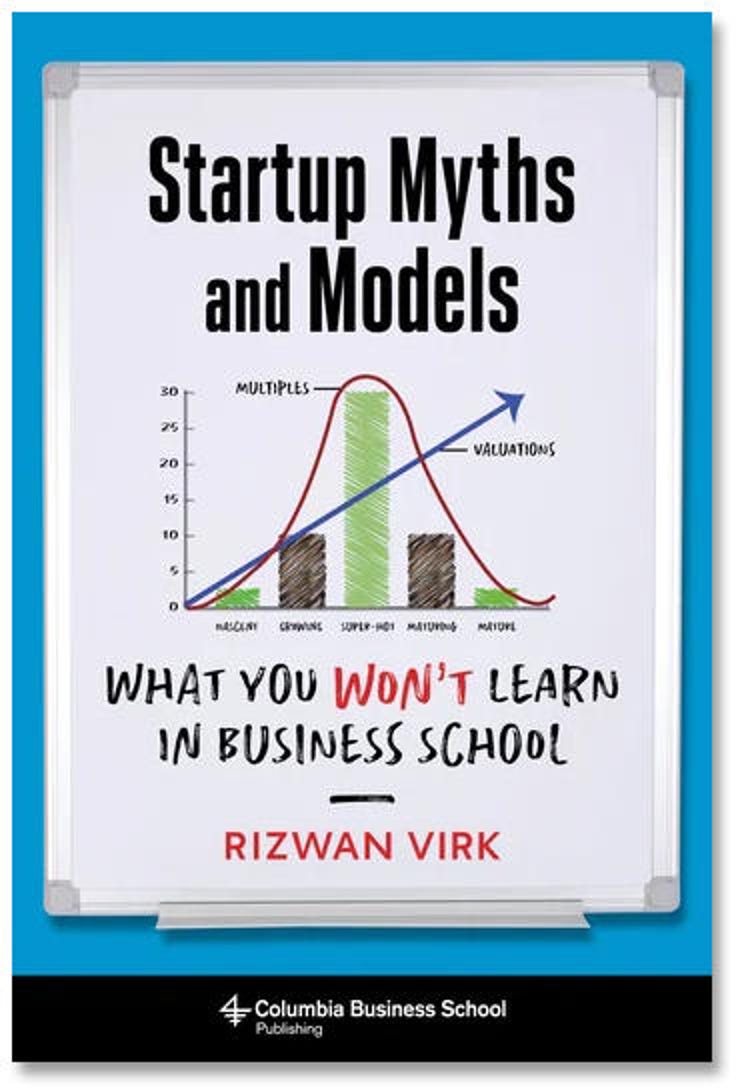Startup Myths and Models, book review: A quirky guide to Startup Land


Startup Myths and Models: What You Won't Learn in Business School • By Rizwan Virk • Columbia Business School Publishing • 288 pages • ISBN 978-0231194525 • $27.95 / £22
There are plenty of clichés about how to found a successful startup, but you're unlikely to know which are actually helpful and which are myths until you've done it a few times.
There's a wealth of experience in Startup Myths and Models drawn from Rizwan Virk's 25 years of building his own startups and investing in other people's. There are practical do's and don'ts, and a nuanced discussion of how to tell if a truism is going to help or hurt your particular situation. This is the kind of expertise most founders don't have direct access to, and there are plenty of useful nuggets here.
In particular, the sections on funding the company, understanding VCs, sales and marketing, moving from coding to management, looking for a new business model and understanding what your company is actually worth should be helpful to those with no experience in these areas.
However, there are also far too many pop culture references that don't add a great deal: Star Wars, Lord of the Rings, Conan the Barbarian, Magic the Gathering, Dungeons and Dragons, the Odyssey, Star Trek and a bit of Buddhist history via Keanu Reeves. One paragraph manages to cram in both Pixar and Princess Bride author William Goldman.
These rather cheesy allusions are there to fill out the conceit that startups conform to the universal Hero's Journey laid out by Joseph Campbell. The myths are grouped into six stages, from The Call to Adventure (getting your startup started might be like stormtroopers murdering Luke Skywalkers' family, leaving him no reason not to go save the princess) to The Underworld and the Return (your startup might fail or get bought, which might be like the hobbits going home to the Shire and kicking out Saruman).
This gimmicky structure rather lets down the book's useful material. The models of the title -- the startup market lifecycles, the four quadrants of pivoting and hiring, the checklists for understanding motivations and expectations, how to calculate user acquisition costs and lifetime value -- are hard to find because they're scattered among the different sections.
SEE: Virtual hiring tips for job seekers and recruiters (free PDF) (TechRepublic)
And infuriatingly, it means that there isn't room to include some of the more interesting-sounding myths, like whether you should build something you're passionate about in full, and whether the author's ill-fated appearance on The Daily Show proves anything about whether there is such a thing as bad publicity. Instead, they're truncated introductions to a free PDF that you can download in exchange for signing up for the author's mailing list -- a classic piece of startup growth hacking.
This format also means that instead of finishing on a note of growth, wisdom or the suggestion that if you finish one startup and want to go straight on to the next one, then Startup Land might be your natural home, the book just stops with Virk needing a bridge loan. That's followed by a (useful) appendix with the different market size and valuation curves that apply over the lifecycle of a startup. This expands on the discussion of the different stages of the market your startup is in from the first myth.
It's also a little disappointing that an otherwise thoughtful book about founding and growing a company written for publication in 2020 has room to mention AOL and Yahoo, but doesn't have anything to say about diversity, which should have been on the agenda even before recent events. Even when Virk is busting the myth that 'two guys and a business model are better than two guys and a plan', there's no discussion of whether it might not be two guys. Still, it's nice to see someone point out that you don't have to code until three in the morning to make a startup successful, even when they admit they do it themselves.
RECENT AND RELATED CONTENT
How startups can position themselves for growth in the next normal
Apple acquires virtual reality startup NextVR
AI startup: We've removed humans from business negotiations
Tech startups just got a 'vital' rescue package to help them cope with the coronavirus crisis
Pivot, not panic: How startups are coping with the coronavirus crisis
Read more book reviews
- Righting Software, book review: Building blocks for software architects
- Adventures of a Computational Explorer, book review: Wolfram's world, in 25 essays
- Home Computers: 100 Icons that Defined a Digital Generation, book review
- The Costs of Connection, book review: A wider view of surveillance capitalism
- Speech Police, book review: How to regain a democratic paradise lost